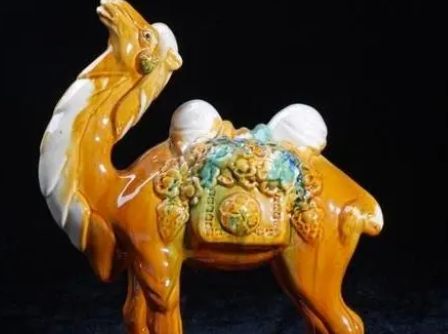Tri-color glazed pottery of the Tang Dynasty is a type of ceramic artwork renowned worldwide for its unique colors and styling. Despite its name containing the word "porcelain," it is actually a type of pottery. Here are some possible explanations for why Tri-color glazed pottery is classified as pottery rather than porcelain:

Firstly, the main raw material used for making Tri-color glazed pottery is loess, which differs greatly from the raw materials used for porcelain, such as kaolin and quartz. This accounts for the significant differences in texture and physical properties between Tri-color glazed pottery and porcelain. Additionally, the firing temperature used for Tri-color glazed pottery is lower than that for porcelain, which is another factor contributing to their differences.
Secondly, the glazes and firing techniques used for Tri-color glazed pottery also differ from those used for porcelain. The glazes for Tri-color glazed pottery mainly consist of lime glaze and copper oxide glaze, while the glazes for porcelain include a variety of minerals and metal elements. Furthermore, Tri-color glazed pottery is typically fired at around 800°C, whereas porcelain requires a much higher temperature of over 1200°C. These differences result in distinct variances in the texture, physical properties, color, and glossiness of Tri-color glazed pottery and porcelain.
Lastly, the shapes and uses of Tri-color glazed pottery also differ from porcelain. Tri-color glazed pottery is often crafted into various household items such as flowerpots, jars, and plates, while porcelain is more commonly used for decorative and artistic purposes. Additionally, the shapes and patterns of Tri-color glazed pottery tend to be more vivid, exaggerated, and folk-flavored, marking another significant distinction from porcelain.
In conclusion, despite being called "porcelain," Tri-color glazed pottery is actually a type of pottery. It differs significantly from porcelain in terms of texture, physical properties, firing techniques, glazes, shapes, and uses. Therefore, it is crucial to correctly understand the identity and characteristics of Tri-color glazed pottery and cherish and preserve this valuable cultural heritage.
Disclaimer: The above content is sourced from the internet and the copyright belongs to the original author. If there is any infringement of your original copyright, please inform us and we will delete the relevant content as soon as possible.
































